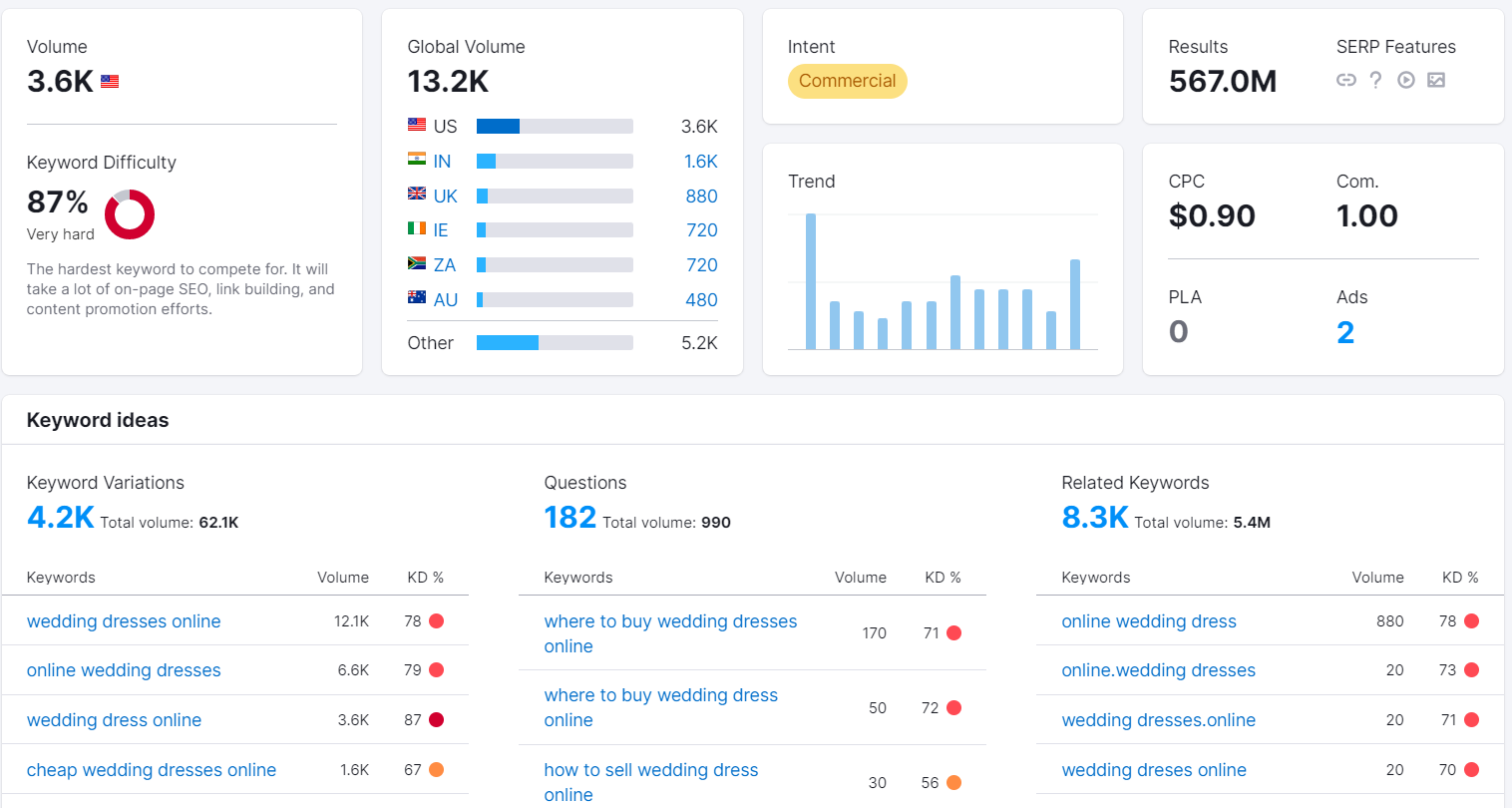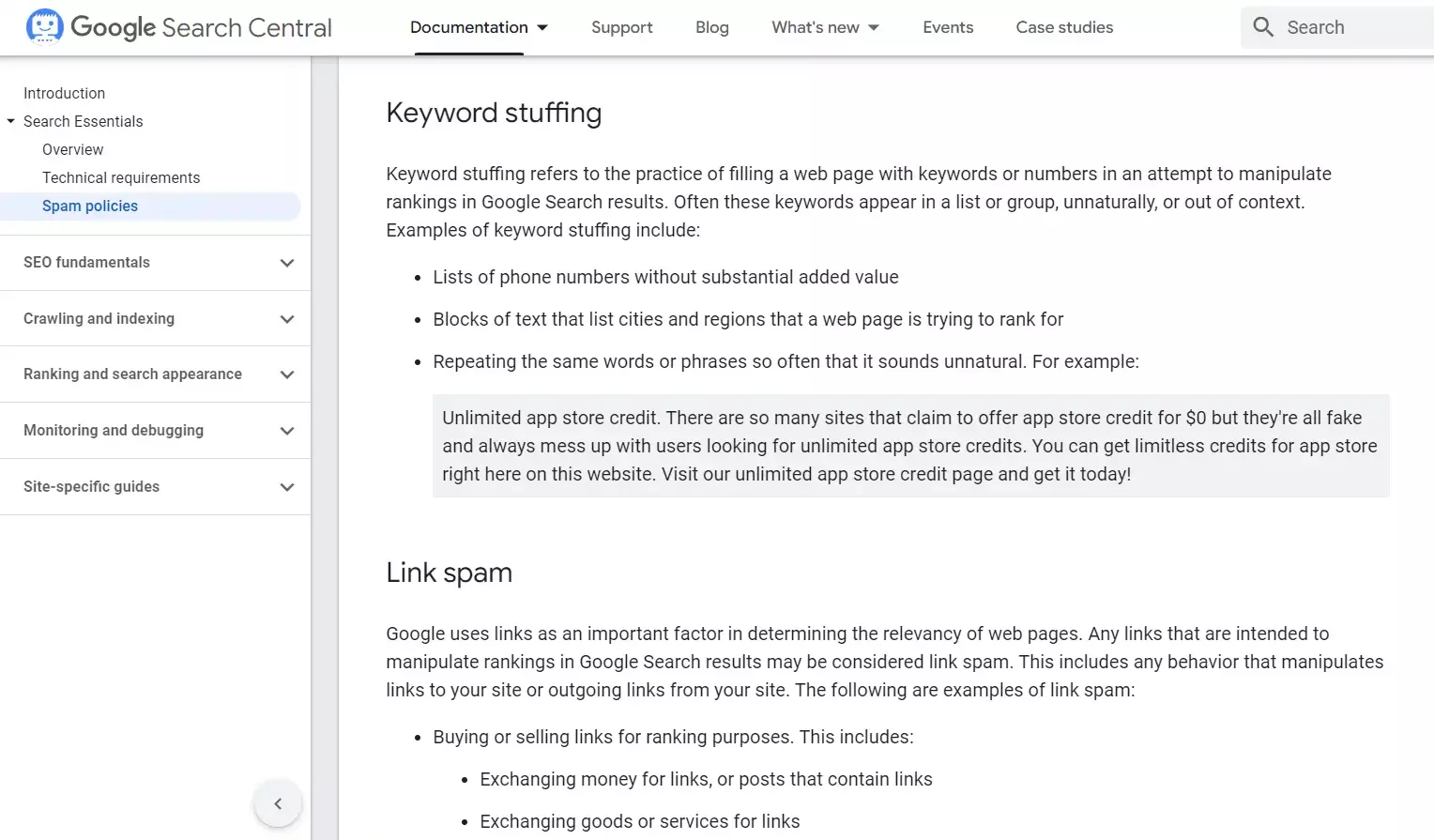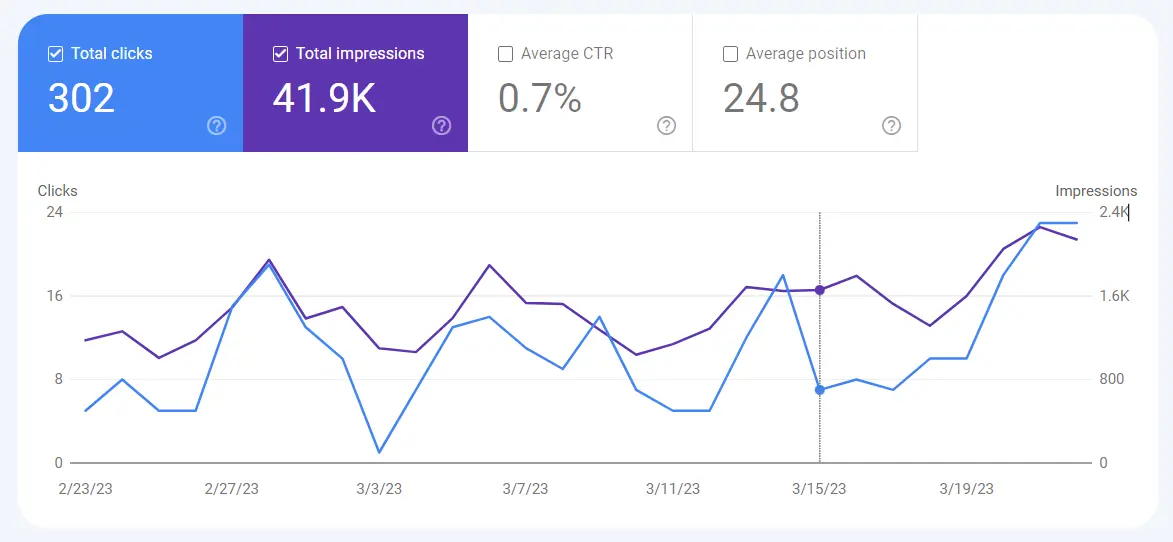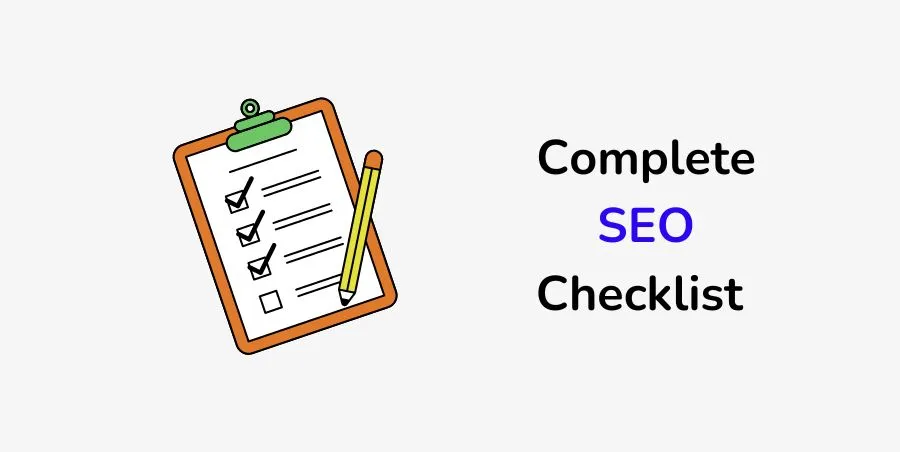Having an ecommerce website is only half the battle. To succeed, your online store needs to be easily navigatable by potential customers. That’s where eCommerce SEO best practices come in – to boost your website rankings on search results and, eventually, increase traffic and revenue.

Disclosure: This content is reader-supported, which means if you click on some of our links, we may earn a commission, but the price on your end remains the same.
What is eCommerce SEO?
Eccomerce SEO refers to practices you adopt to optimize your online store to rank higher on search engine results, making it more visible and attractive to potential customers. And optimizing your website isn’t that challenging as long as you know what you’re doing.
While some tactics may come naturally, being familiar with best practices like keyword research, mobile-friendly design, and optimized page titles and URLs is essential. With online stores growing daily, keeping up with these tactics is critical to stay competitive.
Without SEO, your website may not appear in search engine results, and customers won’t be able to find your products or services, which can lead to your business failure. Research shows that about 90% of small eCommerce stores fail for failing to promote their businesses.
9 Best SEO Practices for an eCommerce Website
If you’re hearing the term ecommerce SEO best practices for the first time, this article will show you practical strategies to promote your online business. Then grow your rankings on popular search engines like Google, Yahoo, and Bing, traffic, sales, and profits.
1. Relevant Keyword Research
Most online searches start with a keyword – a term or phrase people put in search engines while looking for information or products. But before using a research tool, brainstorm words or phrases your target customers might use to search for products or services like yours.
Then use keyword research tools to find the trending terms in a particular region or country. Many free and paid tools are available, such as Google Keyword Planner, SEMrush, and Ahrefs. Use them to identify high-traffic keywords and their long-tail variations.
For instance, if your eCommerce website sells dresses, you can create a product page around the target keyword ‘wedding dresses online.’ According to SEMrush, this term has a monthly search volume of 3600 in the US and 13.2k globally, which is, therefore, viable.

Most importantly, the tools show you other 4.2k keyword variations, 182 questions, and 8.2k related keywords with a total monthly search volume of over 5M. Use some of these terms to make your product page more relevant and discoverable to your target customers.
It would help if you analyzed your competitors to identify more content ideas and gaps. And then consider search intent – the reason behind the search queries you’re targeting. Are people looking to buy a product or just researching it? Tailor your keyword strategy accordingly.
2. On-Page SEO Practices for eCommerce
After finding relevant keywords for your landing or product pages and understanding the search intent, you need to optimize your eCommerce website for on-page SEO. Include the target keywords in the SEO titles, header tags (h1, h2…), images, and meta descriptions.
And most importantly, use the target keyword in the product description – while avoiding keyword staffing, which is against Google policy. And include it in the product or service page URL, and make it short and relevant to increase the impression click-through rate.

You can also include testimonials and ratings on your product pages to let customers have or leave feedback that can help you improve your products and build brand loyalty. And use relevant visuals, including multi-dimension images, to increase dwell time and conversions.
Also, you should include a FAQ (frequently asked questions) page to give your potential customers quick answers to their inquiries and increase their likelihood of buying. These practices will help you boost your website rankings, user experience, and sales.
3. Design with Shoppers’ in Mind
While designing your ecommerce website, ensure your website and product pages do not distract but enhance the shopping experience. Regardless of your products’ desirability or fair pricing, your target customers would leave the site if they find it hard to navigate or search.
And such instances would ruin your audience retention, lowering dwell time. Consequently, search engines understand that your website does not meet the search intent and should not rank higher. Unfortunately, lower rankings mean lower traffic and potential customers.
However, you can do a few things to enhance the user experience of your online store and drive more traffic and revenue. You need to ensure your website loads fast enough. Optimize speed by minimizing image sizes and website code and using a content delivery network.
Use a clear and simple design to make it easier for customers to find what they want. And ensure your website is mobile-friendly, as most people shop on mobile devices. It is essential to have a mobile-responsive site that adapts to different screen sizes and is easy to navigate.
To enhance user experience on your eCommerce website and get better SEO results, you should offer detailed product description that mentions the target keywords. And simplify the checkout process and make it easy for customers to complete their purchases.
Offer multiple payment options and provide clear shipping and return policies. And respond quickly to customer inquiries, providing excellent customer service to build trust and loyalty. That way, you can increase the conversion rate, number of return customers, and referrals.
4. Simplify your Website URLs
A simple URL structure enhances user experiences on your website. Still, it has other SEO benefits, especially because google and other search engines can understand your eCommerce website better. And eventually, know what pages to rank for which words or phrases.
Unfortunately, a poor or complicated URL structure would ruin the user experience and your chances of getting more organic traffic and sales. That’s why you should avoid URLs like this: https://www.eccomercewebsite.com/cat?=112/product?=1234535/main.html.
A search engine may not pick up information about the product name, category, and other details from such a complicated URL. Instead, use simple URLs like https://www.eccomercewebsite.com/products/dresses/white-wedding-dress.html.
According to Google, such a simple and clear URL structure ensures all pages are indexed on Google and that your website is crawlable. That way, search engines understand your content and products and can fetch relevant information like product or service category and type.

More so, you should try as much as possible to ensure no two different URLs direct to the same content, as this may confuse search engines on the right link to use. You should also add relevant and short descriptions to your links s to help Google understand them.
5. Optimize your Images
Another way to increase the visibility and performance of your eCommerce website on search engines is through image optimization. For instance, you should add high-quality images on your website and include the target keywords in file names and alt text.
That way, search engines can understand the purpose of your images and rank your pages higher when people click the image tab or use the image search option. Here’re some of the results for websites that have optimized their pages for the ‘buy wedding dresses online.’

For the search engines to understand why an image is on a page, you must include the alt text, which tells them your image is about wedding dresses. And this applies to all online businesses – not just ecommerce stores. Images also enhance user experience on your site.
6. Allow Customer Reviews
Allowing customer reviews and testimonials on your ecommerce website can significantly impact your conversion rates and has other SEO benefits. The reviews help build trust with potential customers by providing social proof that your products are high quality and reliable.
More so, reviews and testimonials from actual customers help increase the credibility of your brand and products, which can lead to more conversions and returning customers. Valuable feedback can also help you identify areas for improvement and make necessary adjustments.
For instance, while browsing for laptops under $500 on Amazon, you may want to check the details for the third product, specifically because it has the highest number of reviews (39,733). But would you bother to click the product if it had an average rating of 1.2?

Besides influencing the customer’s purchasing decision, user-generated content like reviews also has SEO benefits. Customers can organically use keywords while writing their reviews, boosting your product’s page appearance and performance on search results.
That’s why over 90% of customers agree they are more likely to purchase products with reviews, even when they are not entirely positive. So, let customers speak their minds about their experiences with your products or services and respond to negative comments.
Allowing customers to leave reviews encourages engagement and interaction with your brand, which can lead to increased loyalty and word-of-mouth marketing.
7. Avoid Duplicate Content
Google’s John Mueller says you are not penalized for duplicating manufacturer product descriptions. It is only an issue when the entire website has duplicate content. If the product descriptions are duplicates, but the rest of your content is unique, that’s perfectly fine.
Still, you may want to stand out by writing unique product descriptions as much as possible. Such practice can be time-consuming, especially when your site has many items. Still, it can make your eCommerce website more competitive and improve your SEO rankings.
Shoppers want clear, engaging, and easy-to-understand product descriptions. And in most cases, product descriptions from manufacturers can contain too much technical information. So, you can reorganize the information without sacrificing the facts and be outstanding.
8. Build Quality Backlinks
Building quality backlinks to an ecommerce website is essential for improving its search engine (SEO) rankings and driving traffic to the site. So, create high-quality backlinks from authority and relevant websites to show search engines your site is relevant and credible.
Besides boosting your rankings, backlinks increase referral traffic to your site from other websites, which can be highly valuable and lead to more conversions. But that only happens if you get links from relevant websites in your niche – avoid spammy links at all costs.
Building backlinks can also increase brand exposure and awareness, as other websites mention and link your website. Consequently, you can create a competitive advantage and be more competitive in your industry, outrank your rivals in search results, and boost sales.
The cost of not building quality backlinks to your ecommerce site can be high, as it may result in poor search engine rankings, less visibility and traffic, and lower conversion rates.
Without backlinks, your site may struggle to compete with other ecommerce sites that have established a strong online presence through effective link building. So, check out this guide on how to build backlinks to your ecommerce website and what SEO benefits to expect.
9. Continuous Auditing and Adjustments
You must continually audit your eCommerce website using SEO tools like Semrush and Google Search Console to understand how your store performs on search engines. That way, you can know what areas to improve and use the trending keywords for better results.
For instance, you can monitor your total impressions, click-through rate, and average position using Search Console. And notice what pages or terms drive more impressions and traffic to your website. Then optimize your content to rank for these pages and increase traffic.

You can also use the tool (or Bing Webmaster) to identify any technical SEO issues on your website, solve them, and improve your chances of ranking higher on Google or other search engines like Yahoo and Bing. Or use Ahref’s free Webmaster tool for the same purpose.
Use Google Analytics to understand your website traffic (including location and interests) and behaviour—or traffic sources, including search engines, social media, and referrals. You must keep adjusting and improving your eCommerce website for better SEO benefits.
Conclusion: What Next?
Building an eCommerce website is not enough – you still need to adopt best SEO practices to promote your business online and grow your traffic and revenue. While this may seem complicated, it is not that challenging as long as you follow these 9 best practices:
- Relevant Keyword Research
- On-Page SEO Practices for eCommerce
- Design with Shoppers’ in Mind
- Simplify your Website URLs
- Optimize your Images
- Allow Customer Reviews
- Avoid Duplicate Content
- Build Quality Backlinks
- Auditing and Adjustments
While designing your website, consider user experience and SEO. For instance, ensure your store is navigatable on all devices, especially mobile ones, which most users use to make online purchases. Also, share valuable and original content, and allow customers reviews.
Let me know if you have any questions regarding eCommerce website SEO best practices.

